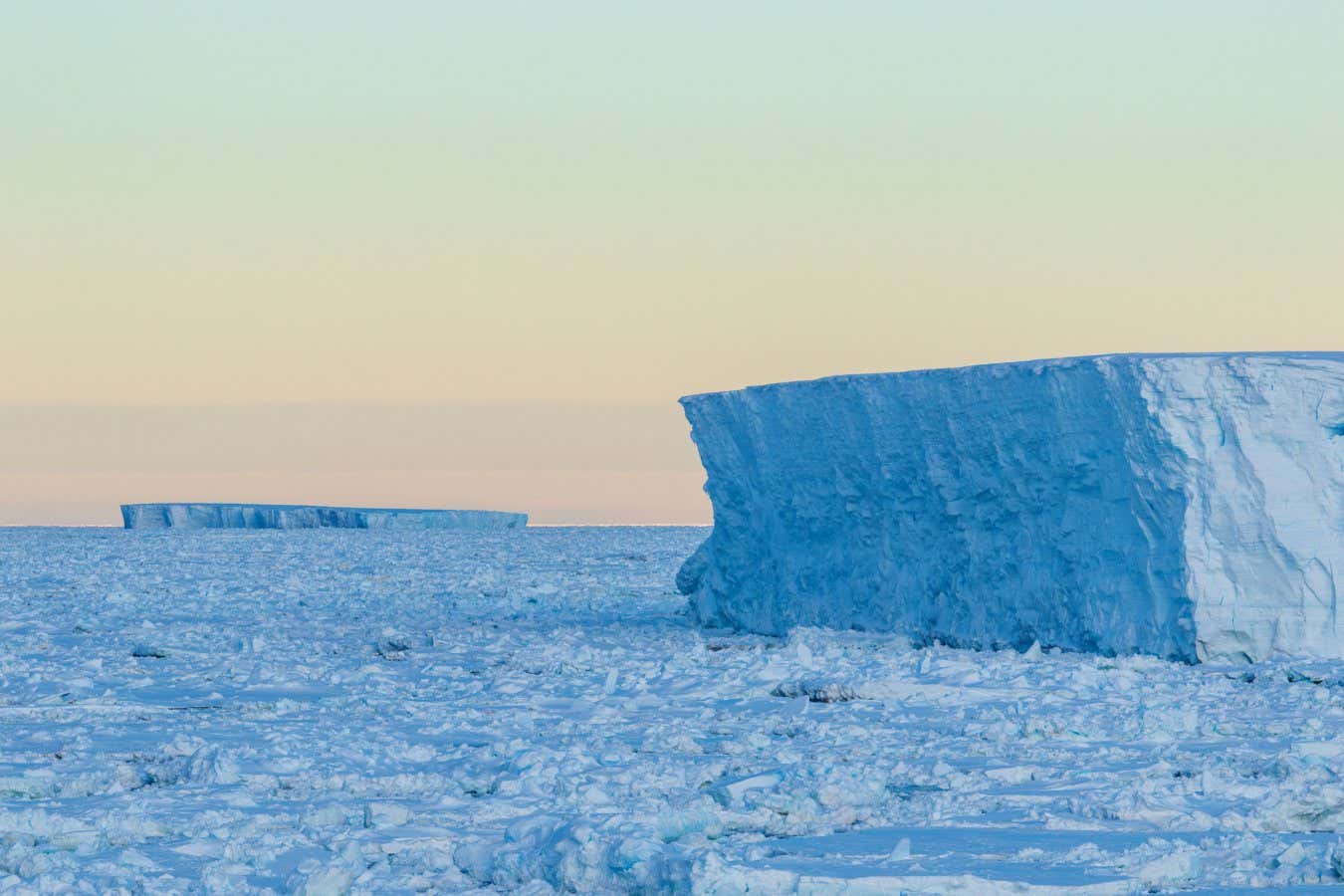Now Reading: Ancient Icebergs Carved Grooves in North Sea Seafloor
-
01
Ancient Icebergs Carved Grooves in North Sea Seafloor
Ancient Icebergs Carved Grooves in North Sea Seafloor

Quick Summary:
- Researchers at the British Antarctic Survey have uncovered ancient scour marks on the North Sea seabed made by giant icebergs around 18,000 to 20,000 years ago.
- These city-sized icebergs were up to a few tens of kilometers wide and hundreds of meters thick and drifted past Britain as northern European ice sheets rapidly retreated.
- The researchers used seismic survey data originally collected for oil and gas exploration to identify the comb-like features buried in seafloor sediments.
- tabular or table-top icebergs that calve from floating ice shelves are currently observed in Antarctica, comparable in size to small US states.
- radiocarbon dating reveals a “regime change” during this time period: large bergs gave way to smaller bergs as rising temperatures caused the collapse of ice shelves.
- The study questions whether massive calving events today, like those involving iceberg A23a and A68a, are immediate precursors to widespread Antarctic instability or collapse.
- According to Dr. Emma MacKie from the University of Florida’s research on satellite data as the 1970s,large iceberg calving appears stable; rather,gradual disintegration (“death by a thousand cuts”) poses greater concern.
Indian Opinion Analysis:
This discovery provides insight into past climate scenarios that may have parallels for contemporary Antarctic changes under global warming conditions. Geologically preserved evidence can inform predictions about how current ice systems evolve over time due to rising temperatures-a key issue for India given its vulnerability to sea-level rise affecting populous coastal regions like Mumbai or kolkata. The recognition that catastrophic collapse is not guaranteed but gradual degradation remains concerning should reinforce India’s commitment toward international efforts in mitigating climate change via renewable energy targets and collaborative environmental policies.



























